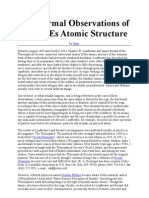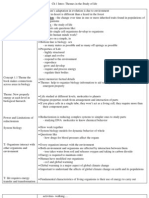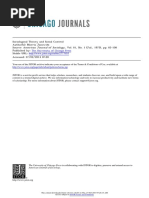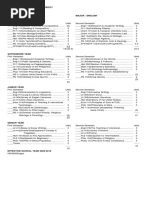Intelligent Power Economy System (Ipes) : American Journal of Engineering Research (AJER)
Intelligent Power Economy System (Ipes) : American Journal of Engineering Research (AJER)
Uploaded by
AJER JOURNALCopyright:
Available Formats
Intelligent Power Economy System (Ipes) : American Journal of Engineering Research (AJER)
Intelligent Power Economy System (Ipes) : American Journal of Engineering Research (AJER)
Uploaded by
AJER JOURNALOriginal Description:
Original Title
Copyright
Available Formats
Share this document
Did you find this document useful?
Is this content inappropriate?
Copyright:
Available Formats
Intelligent Power Economy System (Ipes) : American Journal of Engineering Research (AJER)
Intelligent Power Economy System (Ipes) : American Journal of Engineering Research (AJER)
Uploaded by
AJER JOURNALCopyright:
Available Formats
American Journal of Engineering Research (AJER)
2013
American Journal of Engineering Research (AJER) e-ISSN : 2320-0847 p-ISSN : 2320-0936 Volume-02, Issue-08, pp-108-114 www.ajer.org Research Paper Open Access
Intelligent Power Economy System (Ipes)
Salman Afghani1, Mehwish Iqbal2, Tayyaba Sabir3, Muhammad Ishfaq Javed3
1,2,3,4
(Electrical Engineering Department, Army Public College of Management and Sciences (APCOMS), Rawalpindi, Pakistan
Abstract: - T This paper discusses an Intelligent Power Economy System which is an intelligent way of saving
energy and it allows the user to allocate desired electrical power consumption and it also take care of the comfort level of the user. Intelligent Power Economy System (IPES) is very intelligent, compact, cost effective, and user-friendly device. IPES is truly intelligent because it has the ability to learn and can create a behavioural model of habitants of dwelling. It has a fully functional inference engine and knowledge base with 15 minute resolution and 14 days cycle is embedded into low end 8 bit microcontroller. IPES will provide a mean to move and work according to requirements and needs of the consumer. This system will take required input from the user and then regulates the power according to the mode selected i.e. Economy mode, Medium mode, Lavish mode. In this particular system user will be able to decide how much electricity he needs and it will be set by the user itself. Such system will be beneficial and conducive as we can set a required amount of power to be used at specific times.
Keywords: - Compact, Intelligent, Cost Effective, User-Friendly, Controllers
I. INTRODUCTION Shortage of electricity is the major issue all over the world. This is the major motivation behind this research or project. Our Intelligent Power Economy System helps the individuals to control economy with no effects on comfort level. An individual using this system not only reduces the loss of energy but also make use of electrical power in economic way. Due to the instability in electrical power sector all over the world, we made efforts at grass root level to control this havoc and provide sufficient energy as is required. If this system saves 100 units a month from a house or industry etc then we can save many mega watts of electrical energy in a month and hence making shortfall of energy controllable and feasible. Our proposed device is very intelligent and compact. IPES is intelligent in a way that it has the ability to learn and can capture behaviours and it can create a 14 days behavioural model and after 14 days it wil start repeating. This projects works on three modes and this system will take input from the user and then regulates the power according to the mode selected. Mode 1 will be Economy Mode and in this state less power will be consumed. Mode 2 will be Moderate Mode and this will give medium power. Mode 3 will be lavish mode and this will provide maximum or large amount of power when needed. Another feature of this device is that if it is not being used on regular basis then if mistakenly we forget to put the switch off, it will go off automatically after a preset interval of time. This enables us to keep record of consumption in our daily lives, participates in, or provides demand response solutions and services. By having information, customers could be assisted in to have knowledge of changes in energy usage from normal consumption patterns, either in response to changes in price or as incentives designed to encourage lower energy usage at times of peak demand periods or higher wholesale prices or during periods of low operational systems reliability. This system is not intended for hotels. This infrastructure includes software and hardware implementations to get the required work done. This system must be beneficial to use as it sets required amount of power to be used at specific times.
II.
EXISTING SOLUTIONS
Shanty towns of South Africa have tough neighbourhoods; advance sensitive systems might not function in such towns. Specialized coins which are purchased from the market by the users to put their
www.ajer. org
Page 108
American Journal of Engineering Research (AJER)
2013
electrical power on. The users insert their coins inside the machine kind of boxes that are placed outside their homes and as soon as the coin is placed inside the electricity is provided to their homes. 2. Smart Buildings In Rich Gulf States By LG: These buildings are so intelligent that they are aware of the presence and needs of the habitants. Smart Building system allows operational monitoring and control of machinery, lighting, power equipment and provides facilities control from an alarm to responding according to the preset schedule in case of an event occurrence. It also provides analysis of energy consumption patterns and analyzes the collected information about various resources such as equipment, manpower, energy, supplies, etc which is needed for building management to improve the efficiency of maintenance and management tasks. 3. Project Oxygen: Pervasive, Human-Centric Computing An Initial Experience: [1]Project Oxygen is an intellectual eorts involving many research activities throughout the Laboratory for Computer Science (LCS) and the Articial Intelligence Laboratory (AIL) at The Oxygen projects vision is to bring an abundance of computation and communication within easy reach of humans through natural perceptual interfaces of speech and vision so computation blends into peoples lives enabling them to easily do tasks they want to do collaborate, access knowledge, automate routine tasks and their environment. This project has a three-pronged approach by dividing the space into three broad categories: the H21, a hand-held device, the N21, an advanced network, and the E21, a sensor-rich environment (Figure 1).
Figure 1: An overview of the Oxygen Infrastructure, showing the division into three parts: H21, a handheld digital device, N21, the network infrastructure, and E21, the environment infrastructure. 4. Honeywell Technology Solution Lab: [2]HTSL Research group works with Honeywell product R&D groups and Honeywell Research Labs globally develops key technologies that enhance Honeywell products to benefit its customers. The computation and communication systems (CCS) lab concentrates on core research in the fields of computation systems with a primary focus on wireless system design. The Intelligence Vehicle Technologies group works on autonomous vehicle systems for various applications like Unmanned Air Vehicles, Mining, Agriculture, Smart transportation systems, Robot vehicles, Marine vessels, etc. The focus areas include navigation, perception sensing, guidance, x-by-wire controls, multi-sensor fusion, fault tolerance and reconfiguration, Smart communication and computing platforms with competencies ranging from multi-sensor fusion algorithms, Pattern Recognition, Machine Learning to Vision sensor processing techniques, etc. The Computer Vision and Image Analysis Group are dedicated to conducting basic and applied research in computer vision and image processing.
www.ajer.org
Page 109
American Journal of Engineering Research (AJER)
III. ARCHITECTURE OF THE SYSTEM
2013
The basic knowledge used behind the whole architecture of Intelligent Power Economy System (IPES) is Learning and Automation. The basic technologies are Microcontroller Automation Design and Artificial Intelligence. Figure 2 and 3 shows the flow chart that gives a complete scenario of how the system will work, complete structure of learning and automation process.
Figure 2: Learning Process
Figure 3: Automation Process
www.ajer.org
Page 110
American Journal of Engineering Research (AJER)
IV. SYSTEM DESIGN
2013
Our proposed Intelligent Power Economy System (IPES) is an intelligent device. This device will get information from the user about his need of electricity at a particular time and place. After getting information it will provide electricity intelligently according to the priorities of the user. Its features are human interfaced, compact, user-friendly and cost effective.
Figure 4: It shows the compactness of IPES device and describes the three modes. 1. Tri or Three State Switch: This switch is very compact and its size is equivalent to the size of an IC on which all the three modes will be defined and it will be mounted in a room and it will work according to the Mode selected and LED will be attached to these modes which will indicate which mode is selected by the user. Mode 1 is the Economy mode and when it will be selected it will be indicated by red LED. Mode 2 is the Medium mode and is indicated by green LED. Mode 3 is the Lavish mode and is indicated by blue LED. After getting the mode selected from the switch the respective indication will be given by the LED and system will provide the electricity accordingly. This whole system will consist of an LED, Tri-state button and Processing Device. The system will be attached with appliances to regulate the power according to requirement.
Figure 5: It shows that as soon the user will put this switch on the electricity will be switched on.
www.ajer.org
Page 111
American Journal of Engineering Research (AJER)
2013
Figure 6: Hardware Implementation of IPES. Figure 6 explains the complete hardware of IPES. The main components include microcontroller board, Optoisolator for transfer of electrical signals using light. And a Triode for Alternating Current (TRIAC) that will conduct current, to which the appliances will be connected. 2. Inference Engine: Inference engine is the branch of knowledge engineering and artificial intelligence; it is basically a computer program that derives answer from a knowledge base (Kb). There is no such thing as pure logic. Life at large is ambiguous and runs in chaos. Inference engine is a small device system that can capture the behaviour of people living in a house. There are two types of recognition techniques one class caters for physical appearance of human beings (bioinformatics) and second class deals with human behaviour (forensic science). We have to record the different timings of usage of power from the user so it is important to have sequence of these intervals in which electricity will be used. When there will be a proper record of timings then it will be convenient for controller to run the corresponding code. Otherwise it will become troublesome for the system to operate efficiently. The full mature model extracted by the inference engine is as follow:
Figure 7: Model Extracted by the Inference Engine.
www.ajer.org
Page 112
American Journal of Engineering Research (AJER)
2013
The inference engine derives the knowledge of usage of device in 14 days. The engine keeps the record of 1day and derives the next ones making the model mature enough to use the appliance accordingly.
Figure 8: 14 Days maturity cycle graph Inference engine derives the model by adding and subtracting the value of register if device is on and off respectively. Three modes of usage i.e. Economy, Medium, Lavish are set accordingly as the consumer uses the appliance.
Figure 9: Global Model for One Appliance. One day status of the appliance used by a consumer is given below. Intervals of 10mins are defined on which status of device is checked i.e. ON or OFF. So for one day we have 144 intervals of 10mins each. (+) sign indicates the ON status while, (-) sign indicates OFF status of device.
Figure 8: Daily Status (ON/OFF) of Appliance. In the above diagram there are 144 Registers (Up/Down 8Bit Counters) are being used to accommodate running average of an appliance for each of the 144 segments of time in a day. Hence in 14 days each of the 144 registers holds the running average of an appliance for one of the 144 intervals in a day. And together the 144 registers form the Global Model of an Appliance.
V.
CONCLUSIONS
IPES is a very compact, cost effective, intelligent and user-friendly device. The user needs not to learn or think to use our proposed system (IPES). IPES will save energy intelligently and it will provide a mean to move and work according to the requirements and needs of the consumers. The system has three modes according to the electricity usage and modes are mode 1-economy mode, mode 2-medium mode, mode 3- lavish mode. The device itself has the capability to learn and capture behavior. The device will produce the behavioral model of 14 days and the cycle will repeat after then.
www.ajer.org
Page 113
American Journal of Engineering Research (AJER)
REFERENCES
[1] [2] [3] [4]
2013
Rudolf, L. (2001) Project Oxygen: Pervasive, Human-Centric Computing An Initial Experience,. Advance Information System Engineering, Switzerland. Honeywell energy efficient, innovative and productive company. Mark, D. (1998) Smart House And Home Automation Technologies,. Gross design machine group, Washington. Pipattanasomporn, M., Kuzlu, M and Rehman, S , An Algorithm for Intelligent Home Energy Management and Demand Response Analysis,. IEEE Transactions on Smart Grid.
AUTHORS A Salman Afghani was born in 07/20/1958 in Pakistan and he is Professor, PhD, Advanced man machine systems, MPhil, Industrial automation, MS Mech Engg. He is working as HOD of R&D Department of Engineering Sciences at Army Public College of Management and Sciences (APCOMS), Rawalpindi Pakistan.
Mehwish Iqbal was born in 09/28/1990 in Pakistan. And she is Electrical Engineer with specialization in Telecommunication from Army Public College of Management and Sciences (APCOMS), Rawalpindi Pakistan.
Tayyaba Sabir was born in 10/27/1989 in Pakistan. And she is Electrical Engineer with specialization in Telecommunication from Army Public College of Management and Sciences (APCOMS), Rawalpindi Pakistan.
Muhammad Ishfaq Javed was born in 04/04/1989 in Pakistan. And he is Electrical Engineer with specialization in electronics from Army Public College of Management and Sciences (APCOMS), Rawalpindi Pakistan. He is working as Research Assistant in R&D Dept of Engineering and sciences APCOMS.
www.ajer.org
Page 114
You might also like
- Block RosaryDocument9 pagesBlock RosaryRendine Rex Vizcayno80% (5)
- IOT Based Smart Energy Meter For Efficient Energy Utilization in Smart GridDocument5 pagesIOT Based Smart Energy Meter For Efficient Energy Utilization in Smart GridChan Wing100% (1)
- Smart - Grid Assignment 1Document9 pagesSmart - Grid Assignment 1Tanzil MahmoodNo ratings yet
- Project Report of Smart Energymeter Using IotDocument27 pagesProject Report of Smart Energymeter Using IotLukkuman A100% (6)
- Gramsci's Political Thought Hegemony, Consciousness, and The Revolutionary ProcessDocument314 pagesGramsci's Political Thought Hegemony, Consciousness, and The Revolutionary Processiamjohnsmith82No ratings yet
- The Nativist ApproachDocument10 pagesThe Nativist Approachfullhaus100% (1)
- Title of ResearchDocument4 pagesTitle of ResearchMohsin AzeemNo ratings yet
- Chapter 1 IntroductionDocument5 pagesChapter 1 IntroductionStudy MailNo ratings yet
- Smart PlugDocument5 pagesSmart PlugMCV101No ratings yet
- Eco Live in Conference PaperDocument8 pagesEco Live in Conference PaperDinesh KumarNo ratings yet
- Thesis Chapter 2Document17 pagesThesis Chapter 2Muhammad HaroonNo ratings yet
- Smart Grid and Optimization: Murat Ahat, Soufian Ben Amor, Marc Bui, Alain Bui, Guillaume Guérard, Coralie PetermannDocument11 pagesSmart Grid and Optimization: Murat Ahat, Soufian Ben Amor, Marc Bui, Alain Bui, Guillaume Guérard, Coralie PetermannAbhit SinghNo ratings yet
- IAT2 qp - EE3020 - keyDocument20 pagesIAT2 qp - EE3020 - keyfrankece.new1No ratings yet
- Efficient Energy Management in Smart Grids Based On Raspberry PI & Web of ThingsDocument7 pagesEfficient Energy Management in Smart Grids Based On Raspberry PI & Web of ThingsIJSTENo ratings yet
- Embedded System PaperDocument4 pagesEmbedded System PaperTiffany PriceNo ratings yet
- JETIR2306906Document10 pagesJETIR2306906jagadeepsv31No ratings yet
- Final Draft WalchandDocument5 pagesFinal Draft WalchandShreeNo ratings yet
- Energy Management in Smart Grids Using Embedded System & IOTDocument5 pagesEnergy Management in Smart Grids Using Embedded System & IOTEditor IJRITCCNo ratings yet
- IOT Based Energy MeterDocument24 pagesIOT Based Energy Meterabhishek kalshettiNo ratings yet
- Smart GridDocument19 pagesSmart GridIsrael VillegasNo ratings yet
- A Smart Energy Meter Architecture in Indian ContextDocument6 pagesA Smart Energy Meter Architecture in Indian ContexthhhhNo ratings yet
- ICEPE2018Document6 pagesICEPE2018Gokul DasNo ratings yet
- Smart Energy MeterDocument7 pagesSmart Energy MeterLeo MusiyiwaNo ratings yet
- Energy Conservation Through Smart Building and Smart Lighting SystemDocument7 pagesEnergy Conservation Through Smart Building and Smart Lighting Systemijmrem100% (1)
- THEORYDocument61 pagesTHEORYliki lNo ratings yet
- GRDCF013013 PDFDocument2 pagesGRDCF013013 PDFGRD JournalsNo ratings yet
- Research Article Internet of Things-Based Smart Electricity Monitoring and Control System Using Usage DataDocument16 pagesResearch Article Internet of Things-Based Smart Electricity Monitoring and Control System Using Usage DataZohaib KhanNo ratings yet
- Energy Information Collecting Agent For IoT Big Data SystemDocument3 pagesEnergy Information Collecting Agent For IoT Big Data SystemUpink CurryNo ratings yet
- Project Template ArduinoDocument4 pagesProject Template ArduinoJeciel JulladoNo ratings yet
- Fin Irjmets1699759489Document9 pagesFin Irjmets1699759489Muhammad Iqbal 2107110743No ratings yet
- Smart Energy Meter With Power Usage Monitoring and Controlling Using IotDocument5 pagesSmart Energy Meter With Power Usage Monitoring and Controlling Using IotSsanta SanthosshNo ratings yet
- Fiot Unit VDocument13 pagesFiot Unit Vnaninani102112No ratings yet
- A Comprehensive Review of Artificial Neural Network Techniques Used For Smart Meter-Embedded Forecasting SystemDocument12 pagesA Comprehensive Review of Artificial Neural Network Techniques Used For Smart Meter-Embedded Forecasting SystemKIU PUBLICATION AND EXTENSIONNo ratings yet
- Design and Development of MobileDocument3 pagesDesign and Development of Mobilejohnkyllelumacang699No ratings yet
- An Idea of Smart Grid Technology in IndiaDocument7 pagesAn Idea of Smart Grid Technology in IndiaGJESRNo ratings yet
- Centralized Electricity Billing and Monitoring System With Power Theft ControlDocument4 pagesCentralized Electricity Billing and Monitoring System With Power Theft ControlIJRASETPublicationsNo ratings yet
- DSTMF Draft-1Document6 pagesDSTMF Draft-1Ray SantosNo ratings yet
- 32 Ijaema April 2024Document6 pages32 Ijaema April 2024Akbar aliNo ratings yet
- A Study On Improving Energy Metering System and Energy Monitoring-IJAERDV04I0346872Document4 pagesA Study On Improving Energy Metering System and Energy Monitoring-IJAERDV04I0346872Editor IJAERDNo ratings yet
- An Intelligent Controller For Smart HomeDocument4 pagesAn Intelligent Controller For Smart HomeManuel GuijarroNo ratings yet
- Implementation of An Energy Monitoring System Based On ArduinoDocument6 pagesImplementation of An Energy Monitoring System Based On Arduinoprabhu rachutiNo ratings yet
- Artigo IJELERADocument9 pagesArtigo IJELERAYanRicardoNo ratings yet
- Artificial Intelligence in Power Systems 6972 V4qbhy2Document25 pagesArtificial Intelligence in Power Systems 6972 V4qbhy2praneethNo ratings yet
- IJCRT2105829Document4 pagesIJCRT2105829AliNo ratings yet
- An IoT-Based Smart Energy Meter With Real-Time Power Tracking System A ReviewDocument5 pagesAn IoT-Based Smart Energy Meter With Real-Time Power Tracking System A Reviewleomessijes10No ratings yet
- Smart Grid and Optimization: Murat Ahat, Soufian Ben Amor, Marc Bui, Alain Bui, Guillaume Guérard, Coralie PetermannDocument11 pagesSmart Grid and Optimization: Murat Ahat, Soufian Ben Amor, Marc Bui, Alain Bui, Guillaume Guérard, Coralie PetermannMuhammad FaizanNo ratings yet
- UGC List of Approved JournalsDocument4 pagesUGC List of Approved Journalsp.maheswariopenventioNo ratings yet
- AI Opportunities For Increased Energy Autonomy of Low Power IoT DevicesDocument4 pagesAI Opportunities For Increased Energy Autonomy of Low Power IoT DevicesHikmat AldelouNo ratings yet
- Solar Power IoTDocument20 pagesSolar Power IoTpriyaj122002No ratings yet
- 02. Security and Control System for IoT-Based Electrical DevicesDocument4 pages02. Security and Control System for IoT-Based Electrical Deviceseditor.jsetmsNo ratings yet
- Research PaperDocument5 pagesResearch PaperZonishNo ratings yet
- A Survey On Iot Based Smart Grid TechnologyDocument8 pagesA Survey On Iot Based Smart Grid TechnologyUGCJOURNAL PUBLICATIONNo ratings yet
- 25 Advanced Energy Metering System Using Iot2Document7 pages25 Advanced Energy Metering System Using Iot2chog70889No ratings yet
- IoT Based Application - AbstractDocument6 pagesIoT Based Application - AbstractT.JEMIMAPRICILLAHNo ratings yet
- PV Systems AIDocument10 pagesPV Systems AIRamzan Ali100% (1)
- Gerry Italiano Wowiling, 1-7Document7 pagesGerry Italiano Wowiling, 1-7Frengki SimatupangNo ratings yet
- SasasdasdDocument25 pagesSasasdasdSajjad HussainNo ratings yet
- Feasibility Study of Pervasive Computing Approach For Energy Management in MobilesDocument8 pagesFeasibility Study of Pervasive Computing Approach For Energy Management in MobilesIAEME PublicationNo ratings yet
- Paper 90-Smart Home Energy Management SystemDocument9 pagesPaper 90-Smart Home Energy Management Systemharshadthok5009No ratings yet
- SRS Aryan Raj CSE 320Document12 pagesSRS Aryan Raj CSE 320Aryan RajNo ratings yet
- Energy Auditing System in Buildings Using PLCDocument3 pagesEnergy Auditing System in Buildings Using PLCIJSTENo ratings yet
- Recent Advances in Electrical Engineering: Applications OrientedFrom EverandRecent Advances in Electrical Engineering: Applications OrientedNo ratings yet
- Learning StyleDocument7 pagesLearning StyleMariecris Barayuga Duldulao-AbelaNo ratings yet
- Scientific Research Methodologies N TechDocument25 pagesScientific Research Methodologies N TechBrown MeshNo ratings yet
- Understanding The SelfDocument6 pagesUnderstanding The SelfJK ONo ratings yet
- Owens Missionaries To ArgentinaDocument10 pagesOwens Missionaries To ArgentinaDavid & Hannah OwensNo ratings yet
- Rodekirchen, Magdalena S. What Comes After Entanglement. Activism, Anthropocentrism, and An Ethics of ExclusionDocument4 pagesRodekirchen, Magdalena S. What Comes After Entanglement. Activism, Anthropocentrism, and An Ethics of ExclusionsalarcoNo ratings yet
- SadacharDocument14 pagesSadacharAnonymous qrSsYuxyoYNo ratings yet
- Gravity BookDocument28 pagesGravity BookAnonymous ySUn9WNo ratings yet
- Paranormal Observations of ORMEs Atomic StructureDocument32 pagesParanormal Observations of ORMEs Atomic StructureJeno Zsolt DudasNo ratings yet
- PASCALE: I'd Like To Ask You Something. Do You Believe in Ghosts?Document8 pagesPASCALE: I'd Like To Ask You Something. Do You Believe in Ghosts?joaquincardosoNo ratings yet
- Sweet Emotions - AKIYOSHY, 2011Document10 pagesSweet Emotions - AKIYOSHY, 2011Ricardo YudiNo ratings yet
- CH 1 Themes in The Study of LifeDocument4 pagesCH 1 Themes in The Study of Lifewil7verNo ratings yet
- Assessment Standards PhotographyDocument5 pagesAssessment Standards Photographyapi-292336708No ratings yet
- Patricia UrquiolaDocument7 pagesPatricia UrquiolaisiscopiaNo ratings yet
- Module 7 ActivityDocument1 pageModule 7 ActivityRhobie BulanNo ratings yet
- Rasmussen TextbookDocument160 pagesRasmussen TextbookMohamad Ikhwan100% (1)
- Classics 45B: The HeroesDocument12 pagesClassics 45B: The HeroesVikki PangNo ratings yet
- Sociological Theory PDFDocument28 pagesSociological Theory PDFsemarangNo ratings yet
- Ateneo de Zamboanga UniversityDocument1 pageAteneo de Zamboanga UniversityJennette BelliotNo ratings yet
- The Importance of Being Earnest Act 2 Reading SelectionDocument6 pagesThe Importance of Being Earnest Act 2 Reading Selectionkcafaro59No ratings yet
- Nurul Maisarah Norazman: High School Senior Personal InfoDocument1 pageNurul Maisarah Norazman: High School Senior Personal InfoMaisarah NorazmanNo ratings yet
- Kameshwar ADocument1 pageKameshwar ASathis KumarNo ratings yet
- Marxism and NationalismDocument22 pagesMarxism and NationalismKenan Koçak100% (1)
- (Premier Reference Source) Pandian Vasant - Innovation in Power, Control, and Optimization - Emerging Energy Technologies (Premier Reference Source) - IGI Global (2011) PDFDocument396 pages(Premier Reference Source) Pandian Vasant - Innovation in Power, Control, and Optimization - Emerging Energy Technologies (Premier Reference Source) - IGI Global (2011) PDFDp PdNo ratings yet
- Buy Ebook The Craft of Political Research 10th Edition W. Phillips Shively Cheap PriceDocument84 pagesBuy Ebook The Craft of Political Research 10th Edition W. Phillips Shively Cheap Priceailerkhabes100% (10)
- AIT Internship Report GuidelinesDocument12 pagesAIT Internship Report GuidelinesMIchaelNo ratings yet
- Thesis On LeadershipDocument7 pagesThesis On LeadershipCollegePaperGhostWriterSingapore100% (1)
- Conversation Lesson News Lesson Plan - 0 PDFDocument7 pagesConversation Lesson News Lesson Plan - 0 PDFAmin ShahabiNo ratings yet

























































































